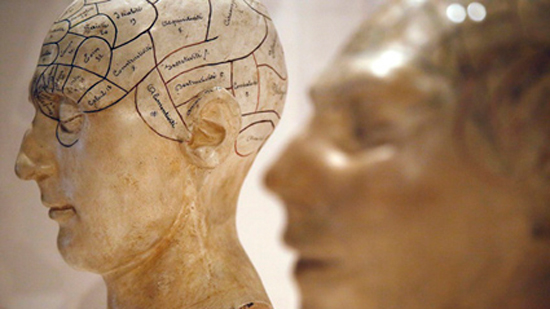4 years ago (June 2015, cyborg #3) we asked whether consciousness and memory are techno-scientific objects. The answer is “yes” – not strange at all. Meanwhile, the social (and political) interest in what this “yes” means is below zero, not only in our parts.
We wrote:
…The long-standing and multi-layered techno-scientific engagement with consciousness may not have produced the impressive wealth of applications seen in computer science or biotechnology, but this does not speak to its social and political significance. On the contrary, many fields within cognitive sciences, such as neuroscience, have avoided exposure to any form of critique. The common understanding of what constitutes “new technologies” is usually limited to gadgets and their uses, which indicates a profound ignorance regarding the actual technological framework of the new capitalist model; and certainly not to mention any well-documented critical analysis.
The general idea of what “consciousness” itself is from the perspective of cognitive sciences can be considered old: it is a neurobiological process that takes place in the brain (of humans as well as other living beings) based on stimuli as well as on the individual and collective/social history of each organism. However, in the theoretical starting points of recent decades, the old “electrochemical” idea of the linear transmission of “messages” from sensory organs to “specific centers” in the brain, and the point-to-point correspondence of these centers with the respective neurotransmitters, have been replaced by a considerably more complex representation. The cornerstone of this modern representation is the neuron (a particular type of brain cell), not however as an “individual” but as a fundamental element of groups, networks, and “cliques.” The term “neural networks,” which is used effectively both for our heads/minds and for the organizational principles of electronic computers and/or electronic networks, originates from the foundational basis of most cognitive sciences. And it is this term, with its dual usage (in living beings as well as in modern machines), that constitutes one of the many expressions of contemporary ideological-political-technical unifications between what is still called “life” (including human life) and the new techno-mechanical infrastructure of capitalism…
Research and (experimental) applications of various theories about what “consciousness” is continue intensively, internationally. Although in various cases the theories seem to have a philosophical flavor, this is superficial. In reality, the common interest of all those involved in “neuroscience” is the mechanization of thought and consciousness. Or, to put it differently, the construction of such ideas/opinions about what “consciousness” is, so that its mechanization becomes feasible.
A preliminary reaction against this techno/capitalist method could be the search for an idea/opinion about consciousness (human, to begin with…) that appears non-mechanizable. No matter how noble (or competitive) the intentions of such an effort might be, beyond engaging in endless philosophical (and ontological) contemplations, it seems useless to us.
Even when specialists of the continually evolving technological paradigm claim to convincingly replicate and mechanize manifestations of life (and this was the declared goal of cybernetics from the outset), they are doing something different. They create an entirely different “model” for these manifestations; and gradually impose it as dominant, even as the only one.
Something like this has already happened with what is called memory. This ability, once exclusive to living organisms, has been definitively transformed into a mechanical property. It is measured as “storage capacity” with specific units. Its capabilities for “processing” material are “deleted” or “improved,” always in a mechanical sense. This daily reality has become so commonplace that even if living human beings already remember less and less (or remember in different ways than before), no one pays attention anymore.
Needless to say, thanks to this “paradigm shift” regarding what memory is, neurological research on memory – of – the human – brain continues, promising exotic applications. For example, the deletion of distressing memories from the brain; as a method of therapy, supposedly, for “post-traumatic stress,” that is, the memories of what they did while killing and destroying, which haunt hundreds of thousands of veterans of recent wars…
Something similar is expected to happen with consciousness. When it is declared (celebratorily?) that machines (the fixed capital…) have consciousness in addition to intelligence, our subordinate species to capitalist commands will be indifferent not only to what (its own) consciousness is, but also to whether there is yet another strategic exception from its capitalist / mechanization masters. It will simply be “satisfied” with the services that will be offered (it will buy) thanks to mechanical consciousness; and “terrified” by the corresponding threats…
In this current small tribute, the cyborg does not seek refuge in a supposedly “non-mechanizable idea of consciousness”… We merely present a sample of some of today’s techno-scientific ideas about (our) consciousness. Because if there is to be “non-mechanical” consciousness in the future, this (we argue) must necessarily include awareness of what the mechanics of it support…
It will be adversarial consciousness, therefore; and not something mysterious “in itself”…
The first text is a lecture given in 2014, in the context of the TED academy, by David John Chalmers. (Accessible here). The Australian Chalmers is introduced as a mathematician, philosopher and consciousness scientist, specialized in the philosophy of mind and the philosophy of language. He is professor of philosophy and director of the center for consciousness at the national university of Australia. He is also professor of philosophy and neuroscience, and director of the center for mind, brain and consciousness at New York University.
The second text is a critical presentation of a relatively recent theory which, apart from having supporters among neuroscientists, shows the basic outlines of the orientations of the “sciences of consciousness”. This theory is supported (also) by Chalmers.
The third text is a translation of a very recent article (author Dagny Taggart) and shows how the applications of neuroscience pass first and foremost through where most of the 3rd industrial revolution has already passed: from the military.
Ziggy Stardust

